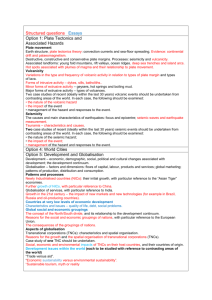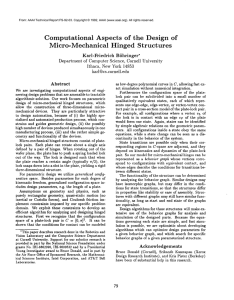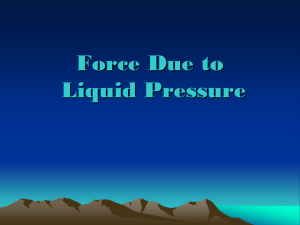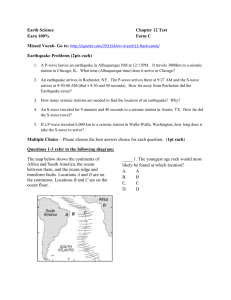PLC Geog3 Plate tectonics and associated hazards
advertisement
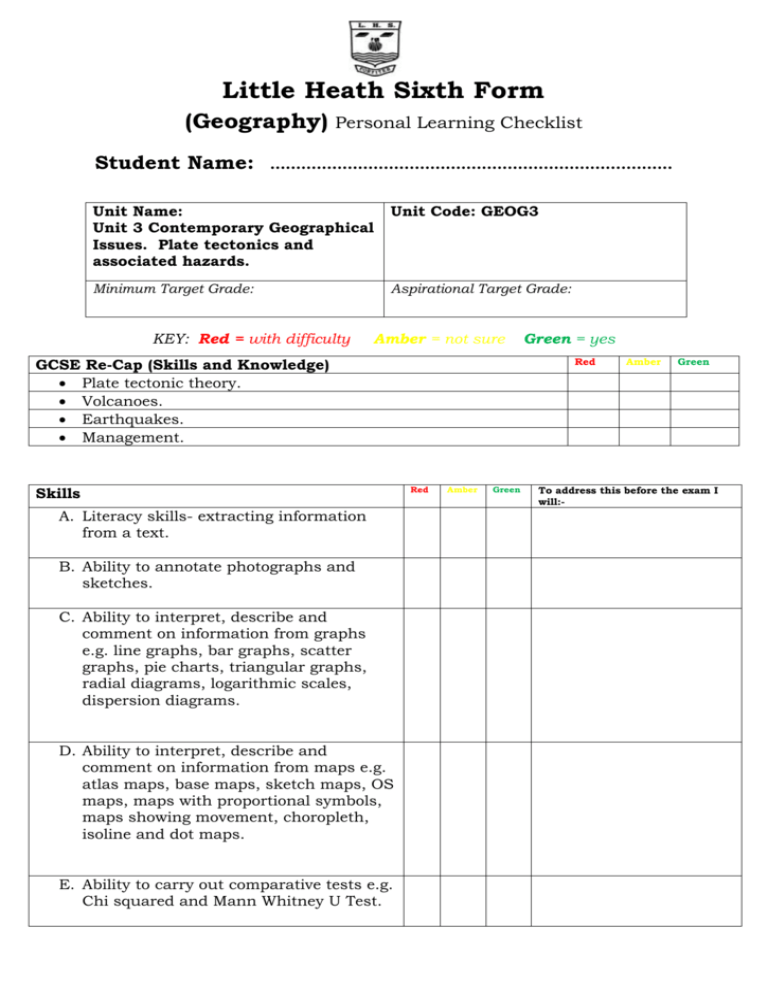
Little Heath Sixth Form (Geography) Personal Learning Checklist Student Name: ……………………….…………………………………..……… Unit Name: Unit 3 Contemporary Geographical Issues. Plate tectonics and associated hazards. Unit Code: GEOG3 Minimum Target Grade: Aspirational Target Grade: KEY: Red = with difficulty Amber = not sure GCSE Re-Cap (Skills and Knowledge) Plate tectonic theory. Volcanoes. Earthquakes. Management. Skills A. Literacy skills- extracting information from a text. B. Ability to annotate photographs and sketches. C. Ability to interpret, describe and comment on information from graphs e.g. line graphs, bar graphs, scatter graphs, pie charts, triangular graphs, radial diagrams, logarithmic scales, dispersion diagrams. D. Ability to interpret, describe and comment on information from maps e.g. atlas maps, base maps, sketch maps, OS maps, maps with proportional symbols, maps showing movement, choropleth, isoline and dot maps. E. Ability to carry out comparative tests e.g. Chi squared and Mann Whitney U Test. Green = yes Red Red Amber Green Amber Green To address this before the exam I will:- Knowledge/Specification (continued) Plate Movement 1. Earth structure, plate tectonics theory: convection currents and sea-floor spreading. Evidence: continental drift and palaeomagnetism. 2. Destructive, constructive and conservative plate margins. Processes: seismicity and vulcanicity. Associated landforms: young fold mountains, rift valleys, ocean ridges, deep sea trenches and island arcs. 3. Hot spots associated with plumes of magma and their relationship to plate movement. Vulcanicity 4. Variations in the type and frequency of volcanic activity in relation to types of plate margin and types of lava. 5. Forms of intrusive activity – dykes, sills, batholiths. 6. Forms of intrusive activity – dykes, sills, batholiths. 7. Major forms of extrusive activity – types of volcanoes. 8. Two case studies of recent (ideally within the last 30 years) volcanic events should be undertaken from contrasting areas of the world. In each case, the following should be examined: 9. the nature of the volcanic hazard o the impact of the event o management of the hazard and responses to the event. Seismicity 10. The causes and main characteristics of earthquakes: focus and epicentre; seismic waves and earthquake measurement. 11. Tsunamis – characteristics and causes. Red Amber Green To address this before the exam I will:- Two case studies of recent (ideally within the last 30 years) seismic events should be undertaken from contrasting areas of the world. In each case, the following should be examined: • the nature of the seismic hazard; • the impact of the event; • management of the hazard and responses to the event. Case Study 1-Iceland Case Study 2- Montserrat REVISION Use the information on this checklist to make revision cards and notes Grade tracking: Grade Date Grade Date Grade Date Grade Date Grade Date Grade Date Note: You should discuss this checklist regularly with your subject teacher/mentor
